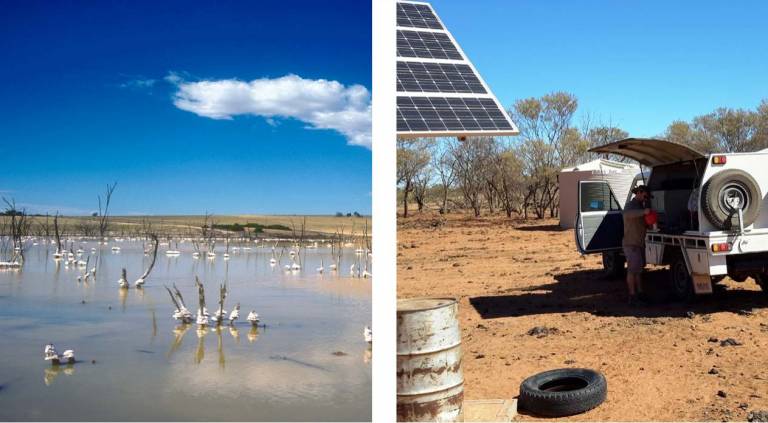CSIRO Australia: A National Science Agency's Approach To Missions

22 July 2021
What is the context for the CSIRO Australia?
As Australia’s national innovation agency, CSIRO is tasked with solving the country’s greatest challenges through science and technology. Contributing to a range of different areas, such as agricultural science, hydrology or digital innovation, the agency works closely with government agencies, businesses and the research sector to develop and deliver information, tools and technologies.
In 2020, CSIRO launched a new missions programme with the aim of building long-term environmental, social and economic resilience, and strengthening Australia’s COVID-19 recovery. The new programme identified six challenges and 12 mission areas related to food security and quality, health and wellbeing, resilient and valuable environments, sustainable energy and resources, future industries and a secure region. The challenges were identified through analysis of trend modelling and forecasting, including the Australian National Outlook report, engagement with CSIRO’s partners in industry, government and academia, and a review of Australian and international priorities (including the Australian Science and Research Priorities and the United Nations’ Sustainable Development Goals). Although CSIRO has always been focused on tackling challenges, its new missions are larger scale scientific and collaborative research initiatives aimed at tackling complex, systemic problems to make significant breakthroughs.
For CSIRO itself, missions also represent a programme of change.
This reflects an organisational shift towards wider collaboration to achieve larger scale objectives. The programme also aims to strengthen CSIRO’s position in the national innovation ecosystem, increasing directionality, growing stronger customer and collaborative partnerships, and making the organisation more accessible to stakeholders. The missions programme has performance metrics that reflect these ambitions, but its success will ultimately be measured by the impact the missions deliver to address the national challenges.
What was the approach to Mission-Oriented Innovation?
CSIRO does not set policy, so the missions do not by themselves include policy changes or regulatory interventions, but they may support policy changes made by other parts of government.
The missions programme uses a stage gate model to define and manage the phases of the mission development and implementation lifecycle: proposal, concept, planning, launch and scale (working towards achieving impact). Missions must meet specific milestones and requirements to progress between these stage gates and are supported with increasing levels of baseline funding.
To be selected to enter the missions programme, a mission idea must be big, bold and inspiring; clearly align with solving one or more of the six challenges; be crossdisciplinary, co-designed and collaborative; draw on CSIRO’s unique science and technology capability and leadership; and have a credible chance of success.
It is anticipated that each CSIRO mission will take around five to seven years to plan, implement and deliver on its intended impact. Each mission will meet its objective by implementing distinctive but complementary and converging programmes of work.
“CSIRO’s Drought Resilience mission seeks to build rural resilience that reduces drought impacts by 30% by 2030.
The mission assumes that climate-related challenges will remain for agriculture, but that impacts can be reduced considerably through a mix of on-farm innovation, new off-farm risk management tools, and implementation of water security and resilience innovations in rural communities. This mission has identified three different, yet interconnected, levels of intervention to tackle drought resilience:
1. On-farm innovation: assist farmers with improved decisions based on climate data for their location, new farming systems to improve water use efficiency and options to minimise risk.
2. Regional resilience and development: through community transition planning to diversify economies, create climate-resilient regional water supply and protect natural capital resources.
3. Policy enablers and outreach: develop information and systems that underpin policy response and recognise international solutions to shared problems.
What solutions are emerging from the missions approach?
Since its announcement in 2020, the CSIRO missions programme has publicly launched four missions – the Hydrogen Industry mission and three agriculture-related missions themed around Future Protein, Trusted Agri-food Exports and Drought Resilience. Two other missions — Ending Plastic Waste and Towards Net Zero — have been approved for launch, with formal announcements expected by the end of 2021.
To be approved for launch, each mission must define a specific, time-bound and measurable objective, and a clear pathway to achieving it. It must also be able to demonstrate its multidisciplinary approach, have external partners who are committed to operationalising the mission and have evidence of its ability to scale to a value of AUD $50-100m.
As the first mission to launch, CSIRO’s Hydrogen Industry mission has rapidly gained momentum, working with a diverse group of partners to progress towards its goal of supporting the world’s transition to clean energy by driving down the cost of hydrogen production to under AUD $2 per kilogram. It is tackling this goal by implementing demonstration projects that validate hydrogen value chains and de-risk enabling technologies, delivering breakthrough science which focuses on the development and commercialisation of new hydrogen technologies, and developing a Hydrogen Knowledge Centre to capture and promote hydrogen projects and industry developments across Australia.
As well as achieving their specific mission goals, the missions approach is providing a front door for potential external partners to identify opportunities to engage with CSIRO. This framework is introducing a market-led approach to drive impact out of an organisation that has been predominantly science-driven.

Figure 1: CSIRO’s work is being used by more than 140 countries to track and compare land degradation factors like over-grazing, drought and contamination. (Source CSIRO)
Figure 2: Researchers are investigating new farming systems that use water more efficiently. (Source CSIRO)
What challenges does the CSIRO Australia face?
The CSIRO Missions program is currently focused on developing its capacity to support missions that are progressing to the scale phase. This includes identifying resource needs, and designing the supporting processes and change management procedures to enable missions to continually refine their plans and pivot as the need arises. It faces the challenge of developing these frameworks while the missions are already commencing implementation. It is seeking the right balance between enabling the missions to be agile and productive, while also ensuring that they are well governed, manage risks, and have the monitoring and evaluation frameworks in place that keep them on track to achieve impact.
The programme also faces broader internal change management challenges. The organisation is seeking to adapt internal policies and systems to enable and incentivise the collaborative ways of working which missions depend upon. The need for change is pervasive: it impacts policies and processes across finance, governance and legal divisions; requires behavioural change and shifts priorities for staff across almost every part of the organisation; and necessitates changes to an array of IT systems. Strategic and operational planning at all levels also needs to be adapted to embed missionrelated objectives and performance measures.
 Close
Close

